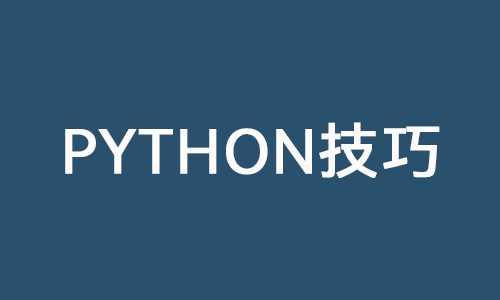在编写Python代码过程中用到的几个简单又好用的特性和用法,这些特性和用法可以帮助我们更高效地编写Python代码

1.链式比较
x = 5
y = 10
z = 15
if x < y < z:
print("x is less than y and y is less than z")
2.链式赋值
total_regions = region_total_instances = total_instances = 0
3.三元运算符
x = 10 result = "Greater than 10" if x > 10 else "Less than or equal to 10"
4.使用args和kwargs传递多个位置参数或关键字参数给函数
def example_function(*args, **kwargs):
for arg in args:
# 执行相关操作
for key, value in kwargs.items():
# 执行相关操作
5.使用enumerate函数同时获取索引和值
my_list = ['apple', 'banana', 'orange']
for index, value in enumerate(my_list):
print(f"Index: {index}, Value: {value}")
6.使用zip函数同时迭代多个可迭代对象
list1 = [1, 2, 3]
list2 = ['a', 'b', 'c']
for item1, item2 in zip(list1, list2):
print(f"Item from list1: {item1}, Item from list2: {item2}")
7.使用itertools模块进行迭代器和循环的高级操作
import itertools
for item in itertools.chain([1, 2, 3], ['a', 'b', 'c']):
print(item)
8.使用collections.Counter进行计数
from collections import Counter
my_list = ['apple', 'banana', 'apple', 'orange', 'banana', 'apple']
counter = Counter(my_list)
print(counter) # 输出为Counter({'apple': 3, 'banana': 2, 'orange': 1})
9.使用any和all函数对可迭代对象中的元素进行逻辑判断
my_list = [True, False, True, True] print(any(my_list)) # 输出为True print(all(my_list)) # 输出为False
10.使用sorted函数对可迭代对象进行排序
my_list = [3, 1, 4, 1, 5, 9, 2, 6, 5, 3, 5] sorted_list = sorted(my_list) print(sorted_list) # 输出为[1, 1, 2, 3, 3, 4, 5, 5, 5, 6, 9]
11.使用set进行集合操作
set1 = {1, 2, 3, 4, 5}
set2 = {3, 4, 5, 6, 7}
print(set1.union(set2)) # 输出为{1, 2, 3, 4, 5, 6, 7}
print(set1.intersection(set2)) # 输出为{3, 4, 5}
12.上下文管理器
class CustomContextManager:
def __enter__(self):
# 在代码块执行之前执行的操作
# 可以返回一个值,该值将被赋值给as子句中的变量
def __exit__(self, exc_type, exc_val, exc_tb):
# 在代码块执行之后执行的操作
# 可以处理异常,返回True表示异常被处理,False则会重新抛出异常
# 使用自定义上下文管理器
with CustomContextManager() as obj:
# 在这里执行一些操作
13.生成器表达式
# 使用生成器表达式计算1到10的平方和 squared_sum = sum(x**2 for x in range(1, 11)) print(squared_sum)
14.使用str.endswith()方法来检查字符串是否以元组中的任何一个字符串结尾
filename = "example.csv"
if filename.endswith((".csv", ".xls", ".xlsx")):
# 执行相关操作
同样的用法还有str.startswith()来检查字符串是否以元组中的任何一个字符串开头
15.else语句与for和while循环结合使用
for item in some_list:
if condition:
# 执行相关操作
break
else:
# 如果循环自然结束,执行相关操作
16.静态类型检查
# 使用mypy进行静态类型检查
def add_numbers(a: int, b: int) -> int:
return a + b
result = add_numbers(5, 10)
print(result) 如需转载请保留本文出处: https://zhe94.com/969.html







